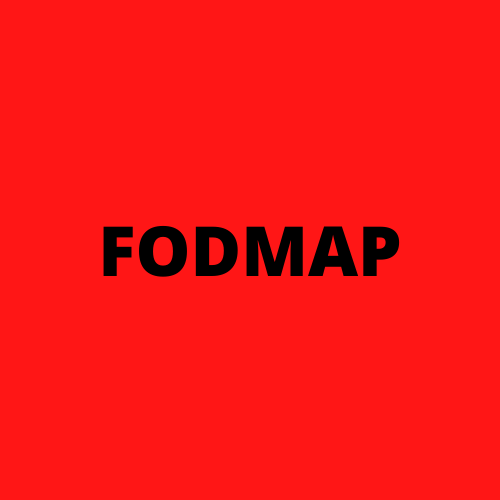
WHEAT ALLERGY
Key Allergens
Wheat is a grain in the Poaceae family of plants. Other plants in this family include barley, oats, corn and rice.
Wheat contains a whopping 28 allergens which have been identified as causing IgE allergic reactions.
Ten of these allergens are airway allergens, linked to pollen from wheat.
Many of the 18 food allergens are in the prolamin family of proteins, these are cereal storage proteins which are collectively called gluten.
Tri a 12 is a profilin protein, this is a panallergen known to cause allergic reactions across multiple foods.
Tri a 14 is a Lipid Transfer Protein (LTP), this is a panallergen which can cause allergic reactions even in cooked foods and can cause issues across multiple groups of foods.
Seitan is a vegan food made from wheat flour, which is a better source of protein than tofu (which is made from soya). If you are allergic to wheat or are intolerant to gluten you will need to avoid foods which contain seitan.
Wheat contains a whopping 28 allergens which have been identified as causing IgE allergic reactions.
Ten of these allergens are airway allergens, linked to pollen from wheat.
Many of the 18 food allergens are in the prolamin family of proteins, these are cereal storage proteins which are collectively called gluten.
Tri a 12 is a profilin protein, this is a panallergen known to cause allergic reactions across multiple foods.
Tri a 14 is a Lipid Transfer Protein (LTP), this is a panallergen which can cause allergic reactions even in cooked foods and can cause issues across multiple groups of foods.
Seitan is a vegan food made from wheat flour, which is a better source of protein than tofu (which is made from soya). If you are allergic to wheat or are intolerant to gluten you will need to avoid foods which contain seitan.
Food Intolerances


Wheat is a high FODMAP food. FODMAP stands for Fermentable oligosaccharides, disaccharides, monosaccharides and polyols. Foods high in FODMAPs can cause symptoms of food intolerance, affecting the gastro intestinal system and this can be mistaken for a true IgE food allergy. Wheat contains fructans which which makes it a high FODMAP food.
Wheat contain a lectin called wheat germ agglutinin. Lectins are another possible cause of food intolerance. Usually cooking foods with lectins makes them more digestible and can reduce the symptoms of food intolerance, wheat germ agglutinins however are heat stable, so their effect is not reduced by cooking.
You can read more about Food Intolerances on the dedicated Food Intolerance Page.
Associated Syndromes
An allergy to wheat has been linked to Wheat Dependent Exercise Induced Anaphylaxis (WD-EIA) and Baker's Asthma.
Allergy to wheat is sometimes linked to Celery-Mugwort-Spice Syndrome as the sensitising allergen is a profilin protein called Art v 4, these proteins are also sometimes also called Bet v 2 proteins.
There is also a link between wheat and Latex Food Syndrome. The plant involved in latex allergy Hevea brasiliensis, the rubber tree plant, has an allergen called Hev b 8 which is a profilin protein. Those very sensitised to latex may have a contact allergic reaction from other foods or plants containing profilin proteins, there is less evidence of this than sensitisation to other latex linked proteins like hevein and chitinases.
Coeliac disease is not an allergic condition, but is an autoimmune disorder triggered by gluten found in wheat to which sensitive individuals may react.
Allergy to wheat is sometimes linked to Celery-Mugwort-Spice Syndrome as the sensitising allergen is a profilin protein called Art v 4, these proteins are also sometimes also called Bet v 2 proteins.
There is also a link between wheat and Latex Food Syndrome. The plant involved in latex allergy Hevea brasiliensis, the rubber tree plant, has an allergen called Hev b 8 which is a profilin protein. Those very sensitised to latex may have a contact allergic reaction from other foods or plants containing profilin proteins, there is less evidence of this than sensitisation to other latex linked proteins like hevein and chitinases.
Coeliac disease is not an allergic condition, but is an autoimmune disorder triggered by gluten found in wheat to which sensitive individuals may react.
Cross Reactivity
Wheat contains lipid transfer proteins, so you may suffer cross reactivity from consuming other cereals containing LTPs, like durum wheat and maize.
Common foods involved in LTP allergy include kiwi, strawberries, sunflower seeds, walnut, apple, mulberry, banana, pea, apricot, cherry, plum, almond, peach pomegranate, raspberry, tomato, grape, celery, peanut, asparagus, cabbage, broccoli, chestnut, lemon, tangerine, orange, hazelnut, lettuce, lentils, lupin, green bean, pear and mustard
Other foods containing profilin allergens are celery, peanut, soyabeans, lychee, walnut, lupin, almonds, mustard, hazelnut, kiwi, pineapple, chilli, melon, orange, strawberry, apple, banana, aubergine (eggplant), peach, pear, tomato, dates, cherry, carrot and barley. Allergic reactions to some of these foods may be considered a marker of profilin hypersensitivity.
Wheat is in the Poales order of foods, so there may be some cross reactivity with other foods in the group such as barley, rye and maize. Read more about Grain Allergens and Pseudocereals.
These food lists are not exhaustive, the most up to date information is on the Cross Reactivity Tool.
Common foods involved in LTP allergy include kiwi, strawberries, sunflower seeds, walnut, apple, mulberry, banana, pea, apricot, cherry, plum, almond, peach pomegranate, raspberry, tomato, grape, celery, peanut, asparagus, cabbage, broccoli, chestnut, lemon, tangerine, orange, hazelnut, lettuce, lentils, lupin, green bean, pear and mustard
Other foods containing profilin allergens are celery, peanut, soyabeans, lychee, walnut, lupin, almonds, mustard, hazelnut, kiwi, pineapple, chilli, melon, orange, strawberry, apple, banana, aubergine (eggplant), peach, pear, tomato, dates, cherry, carrot and barley. Allergic reactions to some of these foods may be considered a marker of profilin hypersensitivity.
Wheat is in the Poales order of foods, so there may be some cross reactivity with other foods in the group such as barley, rye and maize. Read more about Grain Allergens and Pseudocereals.
These food lists are not exhaustive, the most up to date information is on the Cross Reactivity Tool.
Resources
Websites
Science Direct - Wheat Allergy
Anaphylaxis Campaign - Exercise Induced Anaphylaxis
Articles and Journals
Prevalence and Clinical Symptoms of Wheat Allergy in Adults and Adolescents in Central Europe, 2025
Timing of initial symptom onset during milk and wheat challenges: A retrospective study, 2024
A potential role of gliadin extract skin prick test in IgE-mediated wheat allergy, 2023
A Meta-Analysis of the Prevalence of Wheat Allergy Worldwide, 2023
Clinical cross-reactivity of wheat and barley in children with wheat allergy, 2022
Dietary Lectins: Gastrointestinal and Immune Effects, 2020
Humoral and cellular responses to gliadin in wheat-dependent, exercise-induced anaphylaxis, 2003
The diversity of allergens involved in bakers' asthma, 1984
Let me know if you found any of these interesting or useful.
If you spot an article or research that you think is interesting you can message me or tag me on Facebook or Twitter - links at the bottom of the page.